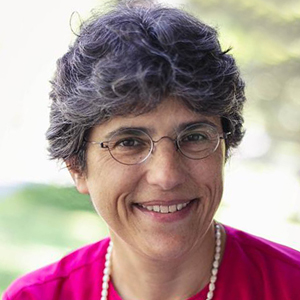Was it only Feb. 26 when this Lent began? Was it really only a bit more than a month ago that I invited the faithful to the observance of a holy Lent, marked them with ashes and said those ancient words, “Remember that you are dust, and to dust you shall return”? Ash Wednesday feels a lifetime and a world away from where we are now. Maybe you can relate.
It was only five weeks ago that members of my congregation met to plan our Holy Week and Easter services. At that point, we had no reason to believe we wouldn’t be doing those services the way we’d always done them.
It was only four weeks ago that we gathered for a “normal” Sunday morning schedule in our beautiful chapel. Service at 9 a.m., children’s and adult formation at 10 a.m., another service at 11 a.m. We had no way of knowing that that Sunday would be our last normal Sunday morning for an extended period.
It was only three-and-a-half weeks ago that priests in my diocese received the directive to suspend the common cup at communion, to serve only the bread to the faithful gathered. I said Mass that way exactly once before the next wave of restrictions set in; it was only three weeks ago that we were instructed to suspend all in-person worship and cancel all church activities for two weeks. New CDC recommendations. Social distancing. No gatherings of more than 50, then 25, then 10.
It was only three Sundays ago that we held our first online Sunday morning service. I told the congregation, gathered on the virtual meeting platform Zoom that I did not want to worship online for so many weeks that we would get good at it. But then it was only 12 days ago that the CDC revised those guidelines again. Now, all in-person worship and all church activities are canceled through May 16, the outer limit of the necessary eight-week window. Hospital and home visits were suspended as well, lest the clergy carry the virus from person to person, house to house.
Grief and uncertainty washed over me, over us as a congregation. How will we provide pastoral care for our congregation in this moment -- in particular, for the sick, the dying and the grieving? How will we offer last rites, funerals and burials? How will we mourn together and remind each other of the hope that is within us?
There was grief in a different way for those services we had planned for Holy Week, for Easter; they would now have to be translated to Zoom. What would we do without a Palm Sunday procession, a Maundy Thursday footwashing, Good Friday Stations of the Cross? And what is Easter without brass and that feeling when the whole congregation joins together in singing “Christ the Lord Is Risen Today”? What is Easter without Eucharist, without that community declaration, “Christ has died, Christ is risen, Christ will come again!”
As a people of faith, we are confronted with a paradox. At a time when we need this community the most, the practices of being community that we have known and relied on -- or, dare we say, that we have even taken for granted -- now have to be suspended or adapted to slow the spread of COVID-19. The orienting rituals of our faith will change this year because we simply don’t have the choice to do what we’ve always done.
It was only 10 days ago that the lay leadership of my congregation gathered on Zoom to discuss all of this. Freed from having to debate whether or not we would have in-person worship, meetings or activities, they brought their creative energy to the more pressing questions: How will we support and sustain our community now? How will we be the body of Christ for and with one another in this moment?
By the end of the meeting, those lay leaders committed to calling every member of the congregation and writing reports of those conversations to share with each other, documenting every prayer and practical concern named. They would hold virtual dinners for the congregation every Monday and Thursday night, inviting our people to find social connection even as they maintained physical distance. They would host contemplative prayer online on Wednesday nights for those needing a centering midweek ritual.
Over the last 10 days, they have done all of these things. In some ways, that’s the gift of a smaller congregation. In other ways, it’s the gift of a community that knows it needs to be community now.
Their leadership has inspired others. During our Sunday Zoom worship, one member offered to teach yoga on Facebook Live multiple days a week, another to teach body prayer. Folks offered to buy groceries for our shut-ins and others who worry about going to the supermarket. The musicians offered to send concert links to anyone missing music in worship or the arts in their lives. And for those who are experiencing tech challenges, several people offered to help them navigate Zoom, Facebook and Google Hangouts.
God knows what the weeks ahead will hold -- it was just days ago that stay-at-home orders were issued for the counties where our members live. Yet if what has been is prologue, then what will come, I am confident, will be more grace-filled experiences of real community. We will continue to find creative ways to be community for and with one another even in this season when we are physically apart. We have to. It is a witness of hope in the midst of fear, peace in the midst of panic and faith in the midst of uncertainty.
It is the promise that at the end of the fast comes a feast where all are welcome.





















